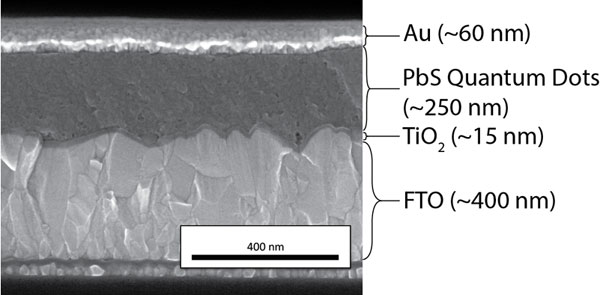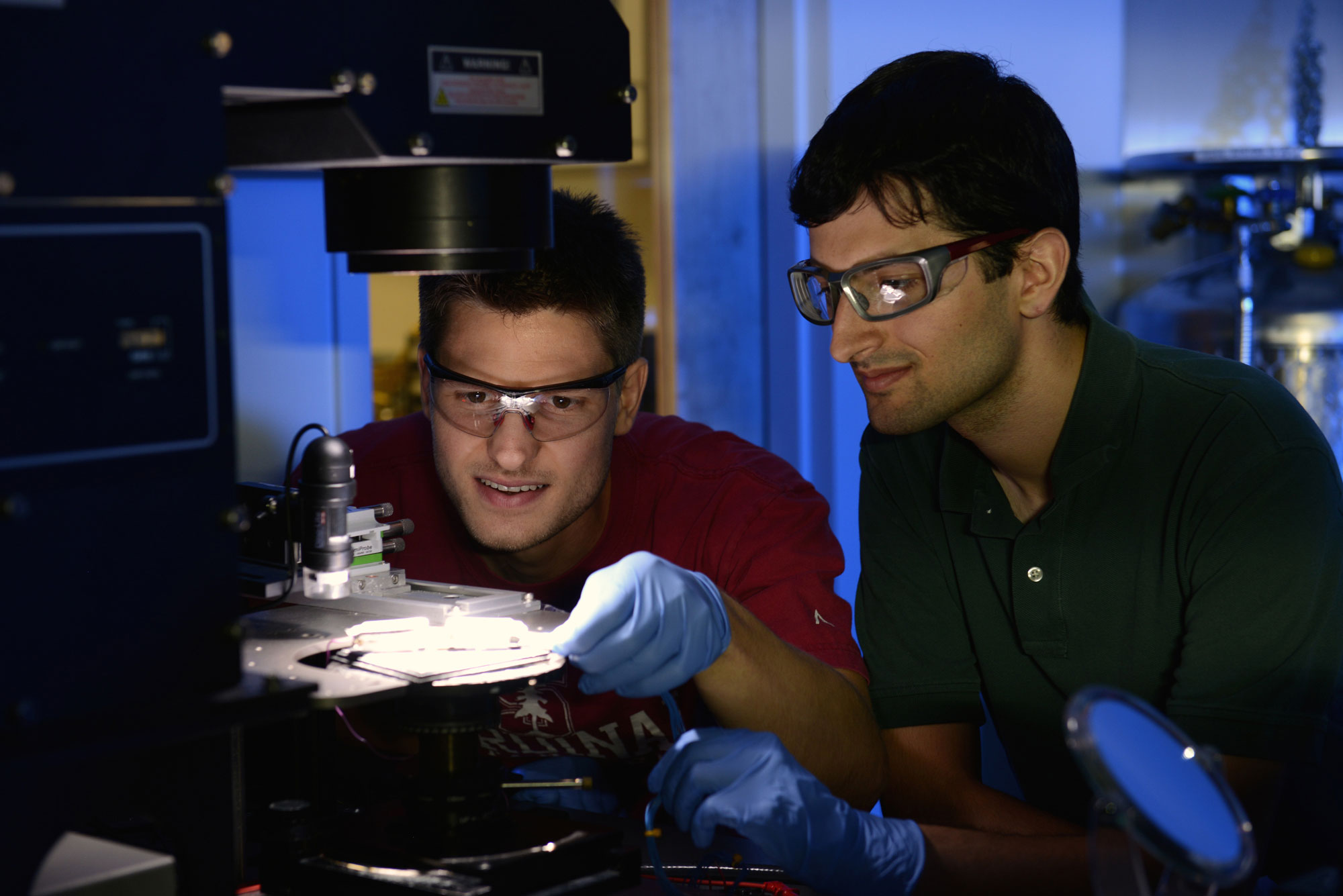Research Area: Interface Engineering
There is a strong need for the development of photovoltaic cells with low cost, high efficiency, and good stability. Despite the success of current thin film photovoltaic materials like copper indium gallium selenide (CIGS) and cadmium telluride (CdTe), these semiconductors contain elements such as indium and tellurium, both materials with low abundance in the earth's crust. We are studying thin film absorber materials comprised of earth-abundant elements. Of current interest are metal sulfides that we are studying by low cost methods of processing, including both solution and vapor methods.
We are also investigating the use of interface engineering at the nanometer scale to improve performance in photovoltaic (PV) devices. Our group currently studies different types of PV devices, including quantum dot solar cells and thin film (e.g. SnS, CZTS) solar cells. Quantum dot solar cells represent a promising next-generation photovoltaic technology. Quantum dots (QDs) comprised of small semiconductor nanoparticles have bandgaps that are tunable based on their size, and they can be used within various PV device structures. We examine the role of inorganic barrier layers in quantum dot sensitized solar cells (QDSSCs) using atomic layer deposition to form thin dielectric layers at the device interfaces. We also study colloidal quantum dot (CQD) solar cells comprised of metal chalcogenide QDs with various protective ligands. Finally, our studies of thin film PV devices focus on engineering of the buffer layers and other interfaces.

Scanning electron microscope cross section of a colloidal quantum dot solar cell.
